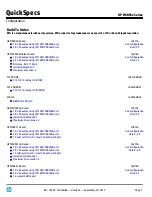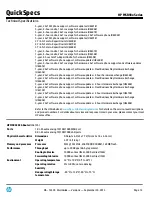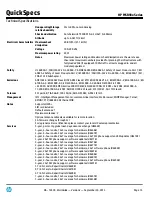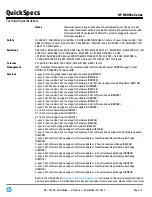
subnets
Built-in applications support
Device management controller (DMC) acts as the gateway of a virtual "network training room"
Wisdom Network (WiNet) technology helps manage a large number of scattered network devices centrally
Remote terminal connection (RTC) and true type terminal (TTY) access allows the connection of a terminal to a router
through an asynchronous interface for data exchange with a front-end processor (FEP) or another terminal through the
router
Layer 3 routing
Static IPv4 routing
provides simple manually configured IPv4 routing
Routing Information Protocol (RIP)
uses a distance vector algorithm with UDP packets for route determination; supports RIPv1 and RIPv2 routing; includes loop
protection
Open shortest path first (OSPF)
delivers faster convergence; uses this link-state routing Interior Gateway Protocol (IGP), which supports ECMP, NSSA, and MD5
authentication for increased security and graceful restart for faster failure recovery
Border Gateway Protocol 4 (BGP-4)
delivers an implementation of the Exterior Gateway Protocol (EGP) utilizing path vectors; uses TCP for enhanced reliability for
the route discovery process; reduces bandwidth consumption by advertising only incremental updates; supports extensive
policies for increased flexibility; scales to very large networks
Intermediate system to intermediate system (IS-IS)
uses a path vector Interior Gateway Protocol (IGP), which is defined by the ISO organization for IS-IS routing and extended by
IETF RFC 1195 to operate in both TCP/IP and the OSI reference model (Integrated IS-IS)
Static IPv6 routing
provides simple manually configured IPv6 routing
Dual IP stack
maintains separate stacks for IPv4 and IPv6 to ease the transition from an IPv4-only network to an IPv6-only network design
Routing Information Protocol next generation (RIPng)
extends RIPv2 to support IPv6 addressing
OSPFv3
provides OSPF support for IPv6
BGP+
extends BGP-4 to support Multiprotocol BGP (MBGP), including support for IPv6 addressing
IS-IS for IPv6
extends IS-IS to support IPv6 addressing
IPv6 tunneling
allows IPv6 packets to traverse IPv4-only networks by encapsulating the IPv6 packet into a standard IPv4 packet; supports
manually configured, 6to4, and Intra-Site Automatic Tunnel Addressing Protocol (ISATAP) tunnels; is an important element for
the transition from IPv4 to IPv6
Policy routing
allows custom filters for increased performance and security; supports ACLs, IP prefix, AS paths, community lists, and aggregate
policies
BGP4+ support
utilizes the BGP-4 (RFC 4271) exterior routing protocol for routing integrity and reliability between different autonomous
systems
Security
QuickSpecs
HP MSR93x Series
Overview
DA - 14559 Worldwide — Version 2 — September 30, 2013
Page 4





































